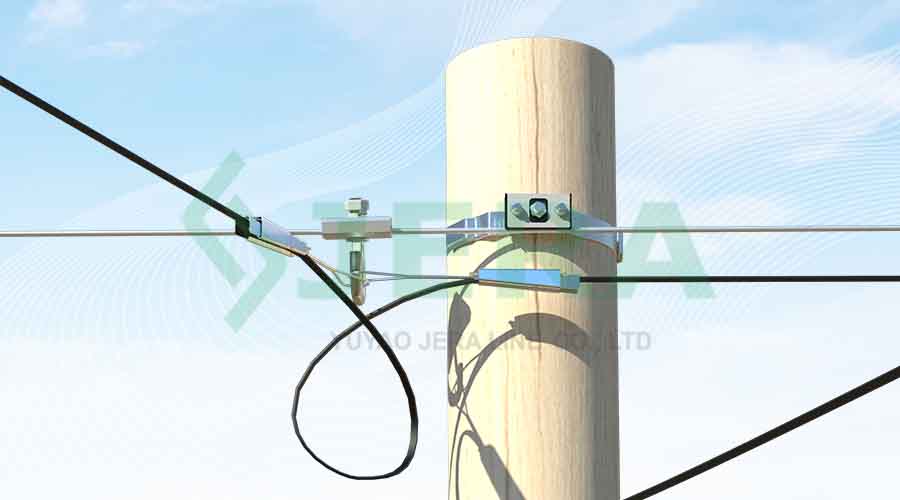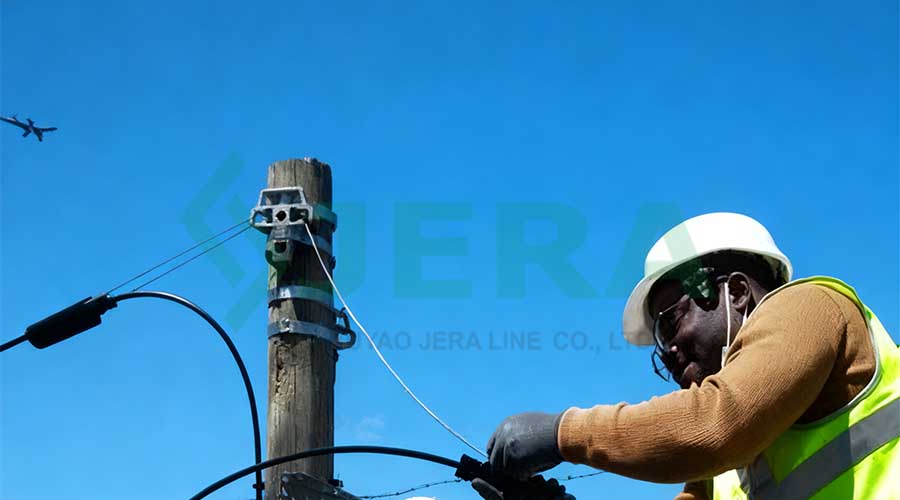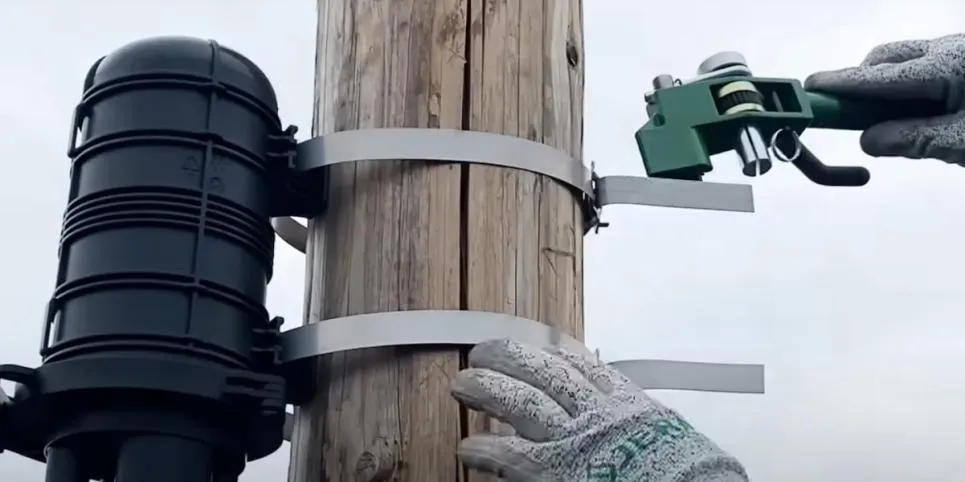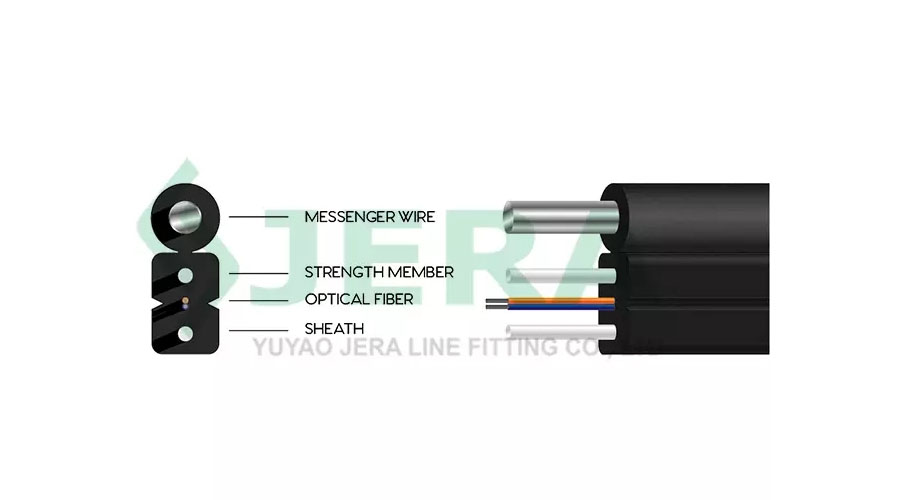Stainless steel banding, also known as stainless steel straps, is a highly durable, corrosion-resistant tying material. Primarily used to secure industrial fittings to poles, it plays a pivotal role in passive optical network construction and electrical fastening solutions. Its robust structure ensures reliable fixation, making it indispensable for scenarios demanding long-term stability against environmental wear.
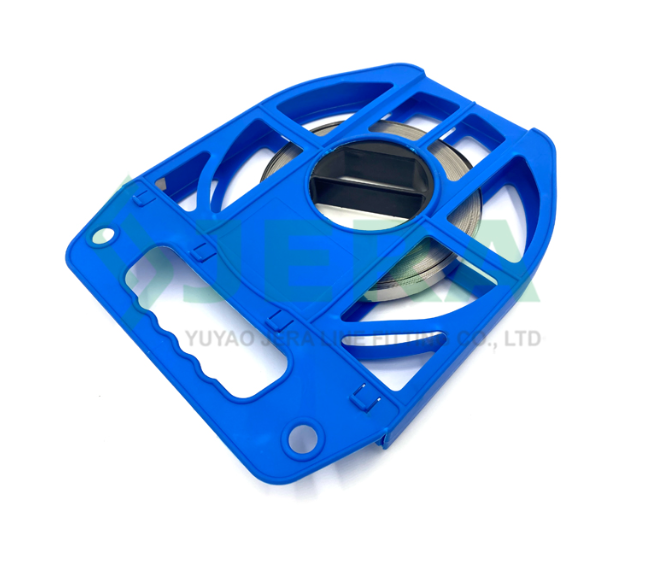
Key features of stainless steel banding
Stainless steel banding, also known as stainless steel strapping, offers several key features that make it a popular choice in various industries. Here are the main characteristics:
-
Exceptional Corrosion Resistance
-
High Mechanical Strength
-
Long-Term Durability
-
Versatile Adaptability
-
Secure Fixation
-
Competitive price
In 2013, Jera Line launched the production of pole bands and brackets specifically designed for the installation of aerial cable network lines. Its banding/strapping products and associated accessories are engineered to bundle and secure industrial fittings effectively.
A banding system consists of a set of fastening materials and specialized fixing devices. Boasting versatility, durability, and an extremely high breaking strength, this system stands out as an ideal solution for heavy-duty applications—such as the construction of electrical distribution lines, aerial transmission lines, telecommunication lines, outdoor passive optical networks, and low-voltage/high-voltage ABC (Aerial Bundled Cable) lines.
Relevant banding products include:

_1761123500_WNo_873d213.png)
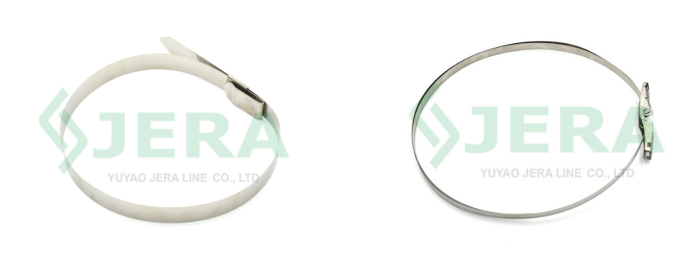


How Stainless Steel Banding Used in Power and Fiber Cable Installation
Stainless steel banding is primarily used for securing, supporting, and organizing cables in power and fiber cable installation, ensuring long-term stability even in harsh environments. Its application is tailored to the distinct needs of power (high-voltage, heavy) and fiber (fragile, signal-sensitive) systems, with core uses and methods as follows
1. Key Applications in Power Cable Installation
Power cables are heavy and operate under high voltage, so the banding focuses on load-bearing and anti-corrosion.
Cable fixation on poles/towers: Secure thick, heavy power cables to utility poles, steel towers, or cross-arms, preventing displacement caused by wind, gravity, or temperature changes.
Bundling multiple power cables: Bundle parallel power cables together to reduce vibration and avoid friction between cables, which could damage insulation.
Securing accessories: Fasten power cable accessories to supports, ensuring they stay in place to maintain stable power transmission.
2. Key Applications in Fiber Cable Installation
Fiber cables are thin, fragile, and sensitive to signal interference, so the banding prioritizes gentleness and stability.
Fiber cable routing in ducts/pipes: Secure fiber cables to the inner walls of underground ducts or overhead pipes, preventing tangling or excessive bending.
Support in passive optical networks (PONs): In outdoor PON installations, use the banding to gently fix fiber distribution boxes or drop cables, avoiding pressure on the cables.
Termination area organization: At fiber termination points, organize and secure fiber pigtails or jumpers to keep the area neat and prevent accidental pulls that damage fiber cores.
3. General Installation Steps
Prepare the banding and tools: Cut the stainless steel banding to the required length and prepare a tensioning tool and a buckling tool.
Wrap the banding around the cable and support: Circle the banding around the cable and the supporting structure, ensuring it is aligned and does not overlap excessively.
Tension and fasten: Use the tensioning tool to tighten the banding—apply moderate force—then use the buckle to lock the banding in place and trim excess length.
Inspect the installation: Check if the banding is secure, the cable is not deformed, and the buckle is firmly fixed to ensure long-term reliability.
For more information or to get started on your next project, reach out to us Jera Line is a leading manufacturer in China Our team is here to help you select the best FTTH products for your fiber optic network!


















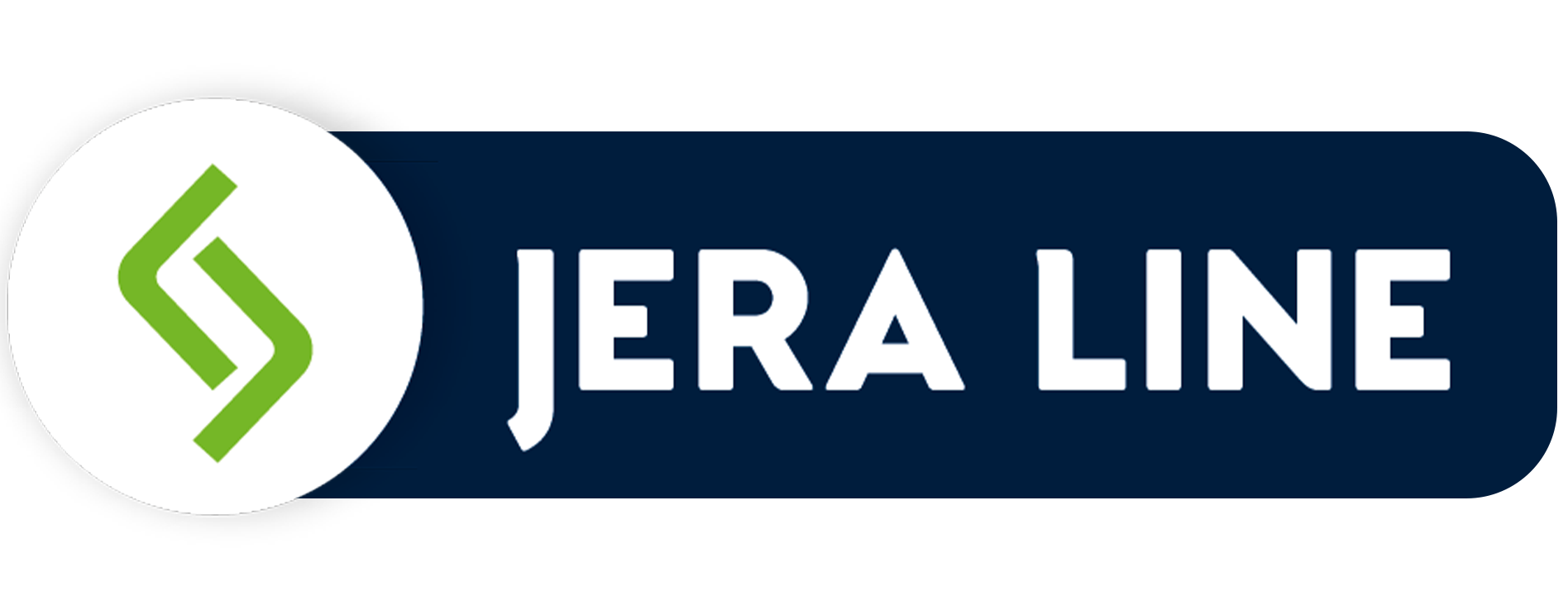


.png)







_1761123500_WNo_873d213.png)



